slides: Research by Oregon Universities Attract Over $1 Billion





 Email to a friend
Permalink
Email to a friend
Permalink
Thursday, December 18, 2014
Taya Alami, GoLocalPDX Reporter
Over $1 billion in funding for research programs flowed through universities in the state of Oregon during the 2013-14 school year, according to data published by the schools.
Federal funding, particularly for engineering and medical sciences, increased among the largest universities in the state since the year before
Still, the influx of cash isn’t uncommon in the state’s institutions of higher learning. The University of Oregon (UO) saw federal funding for research rise since the previous year.
Below Slideshow: See The 20 Fascinating Research Projects You Should Know About
Eleven percent of the university’s total $110 million in research revenue came from federal grants, according to Lewis Taylor, the communications director for the UO's Office of Research and Development.
Federal funding for research increased 13 percent from the previous year, a report released by the UO stated. Approximately 98 percent of research revenue came from outside of the state last year, Taylor said.
Whether the increases in funding can be sustained next year is unclear. As a new group of congressional law makers get closer to taking office, some educators are uncertain whether the increase in federal grants will continue over the next few years.
However, only the UO's research revene from federal sources increased. Donations, state grants and private contributions were relatively stagnant compared to the year before, as Taylor pointed out.
“It would not be accurate to say that there's an excess of funding available,” Taylor said. “As many have put it, when it comes to federally funded research, flat is the new up.”
Some areas explored by UO researchers included studies on how microbes in a person’s digestive tract can harm their central nervous system, how impulsive eating can be curbed by cognitive therapy and computers, and how biodiversity can impact a person's emotions.
Meanwhile, professors at Oregon universities said that a future where cancer is prevented through diet, and autism can be predicted through genetic mapping, isn't too far off.
"I think we coud always use more federal funds for research," Taylor said. "I couldn't put an exact number on it."
Increased emphasis on research
The landscape for getting a college education in the state has changed in recent years, since institutions have put an increased emphasis on research, Willamette University (WU) Communications Officer Adam Torgerson said.
“More than just the funding, [the research] opened up a lot of cool opportunities for undergraduate students,” Torgeson said.
Public universities aren’t the only schools being awarded federal dollars. WU was awarded a grant from the National Science Foundation to conduct research, making it one of the state’s first private universities to receive funding for research from the foundation.
Like its public counterparts, despite WU accepting federal grants, the school’s funding total remained stagnant.
“Willamette is a private university,” Torgeson said. “[Funding] is a little bit different. It's more steady.”
Biggest research budget: OHSU
The the biggest research budget belongs to Oregon Health and Sciences University, bringing in least $340 million in research last year - still well short of the $2 billion of research revenue for Johns Hopkins University.
Projects at OHSU include efforts to create a vaccine for HIV, a cure for Parkinsons, changes to how physical pain can be observed and quantified, in addition to highly-publicized efforts to find cures for a range of known cancers.
Nike-founder Phil Knight pledged that he would donate $500 million to the Knight Cancer Institute at OHSU, on the condition that the university and legislature would match his contribution by December 2015. The university is well on its way to matching Knight's challenge, according to media reports.
Across the state, academic professionals are developing a number of projects that they said could potentially change the way people live their lives, forever.
Findings from projects in Oregon could completely change the way medicine is practiced, how energy is stored, and the role of micro robots performing everyday tasks and making decisions, accoring to studies.
Related Slideshow: Twenty Fascinating Research Projects You Should Know About

Prev
Next
Pain Relief
Visually Representing a Patient's Pain
Brain researchers at OHSU are focusing on how to create a "biomaker" that would allow doctors to visibly observe a patient's pain, the intensity of the pain, and where it hurts.
“Many of people have pain that we can’t explain because we can t see what’s wrong with them. It’s because there’s changes in their brain" the lead researcher of the project, Dr. Mary Heinricher, said. "We’ve been trying to see those changes.”
If an application for the findings can be fully developed, the research will allow medical professionals treating any kind of pain to utilize information from the signals between neurons, which are always happening in the brain.
“It will change how we view pain, from a suspicion of someone complaining of something not real to us understanding them."

Prev
Next
Teaching Girls Classroom Confidence
Researchers at Willamette University are studying how educators can empower female students to believe they're capable of learning in school science labs, or classroom settings.
Educators are hoping the research will help to even the balance between women and men working in advanced sciences.
Prof. Emma Coddington said her research is based in neuroscience, but has applications in teaching.
“It’s insufficient just to have great science - you also need a really great plan for teaching, Coddington stated. "That’s what’s unusual about this grant.”

Prev
Next
Microbes in Your Gut Affect Your Mental Health?
Biology research at the University of Oregon is examining whether microbes in the digestive tract play a role in mental illness.
When something goes wrong with the microbes in a zebrafish's gut, it can cause problems for genes that regulate the development of the central nervous system.
The research could potentially shine a light on the importance of the small intestine. the absorption of nutrients (and medications) in the digestive system.
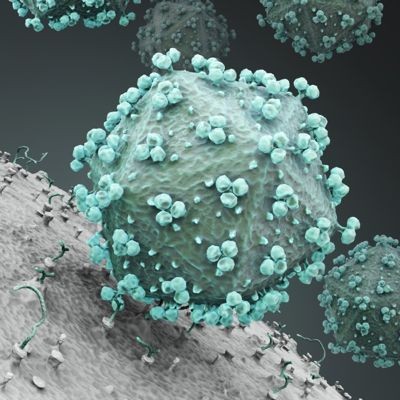
Prev
Next
HIV Vaccine
Researchers at OHSU's Vaccine and Gene Therapy Institute announced they had created a vaccine for HIV last year. The drug is being tested on a strain of the virus that's prevalent in primates called the Simeon Immunodeficiency Virus, or SIV.
Studies found that the vaccine completely eliminates the virus from the bodies of monkeys, seeking out every virus-infected cell and destroying it.
Doctors are hoping that a modified version of the vaccine will be an effective alternative for humans.
Trials are continuing as the thousands of Oregon residents living with HIV anxiously watch.

Prev
Next
Appetite Suppression
At the UO, psychology professor Elliot Berkman and his team have discovered techniques to teach people how to block unwanted thoughts - specifically unwanted cravings and impulses to eat fattening, unhealthy foods, as processed foods are what people have the most difficulty resisting, according to researchers.
Participants in the studies have had their brain activity mapped by a full-body MRI machine while they struggled to resist their favorite treats.
Using cognitive therapy, researchers teach the participants how to resist their impulses by simply doing whatever comes easiest to them. Some of them simply wait for the urge to subside, among other techniques. The goal is to eventually have a participant change their perceptions of problem foods.
“We’re coming together to build innovative new tools that will really impact people’s lives for the better,” Berckman said in a statement.
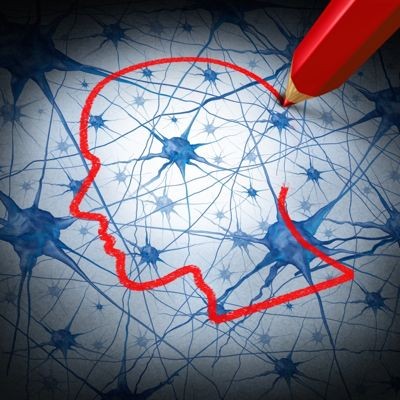
Prev
Next
Treatment of Parkinson's Disease
One of the many research initiatives at OHSU examines how to teat Parkinson’s Disease, a degenerative brain condition that paralyzes the central nervous system.
Researchers are studying a number of different methods forn ew treatments, including stimulating a patient's brain to regenerate dead neurons. Researchers will also be studying drug treatments and researching genetics.
The goal of the Parkinson Center & Movement Disorders Program is to find a cure for the disease and improve the quality of life of patients whom suffer it, its researchers stated.

Prev
Next
Identifying Genetic Risk Factors for Autism
Genetic researchers at OHSU are hoping to identify Autism's genetic risk factors.
The frequency of Autism diagnosis in the U.S. has alarmed medical professionals and baffling parents. The CDC reported that one out of 68 children born in the country are diagnosed as being on the spectrum of Autism.
Parents are hoping that the studies will shed some light on the mysterious disorder.
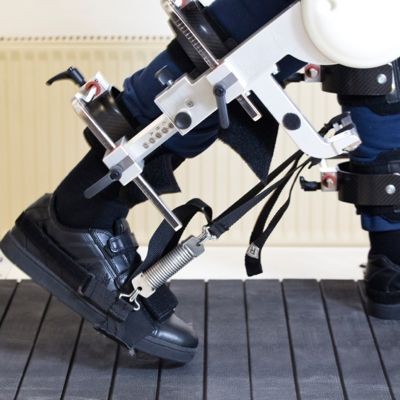
Prev
Next
Robotic Exo Skelletons Can Help People Walk Again
Researchers in Oregon State’s robotics lab are developing wearable, robotic exoskeletons that could help some people who have lost their ability to walk, like veterans and the elderly, to regain their mobility.
Many of the prosthetics currently being developed would allow a patient to feel sensations and control the artificial body part using only their mind, as if the mechanical device was a natural part of them, according to Dr. Ravi Balasubramanian, the lab's director.

Prev
Next
Teaching Parents How to Educate Their Kids
One of the Willamette University projects is conducting research on teaching for the Oregon Dept. of Education.
WU Communications Officer Adam Torgeson said the purpose of the study is to identify ways to teach parents how to facilitate their child's learning.
"When it comes to getting results in early childhood education, sometimes its more effective to teach the parents," Torgeson said.

Prev
Next
Saving Trees From Invasive Insects
The National Science Foundation awarded a team of researchers from the UO Geology Dept. $1.3 million to study the impact of how humans interact with the environment.
The group is examining forestry trends to determine whether climate change played a significant role when trees were killed by pine beetles, an invasive insect in the Pacific Northwest.
Data from the research has indicated that, "tens of millions of trees had died in the region over the last 20 years," due to pine beetle infestations.

Prev
Next
Using Stem Cells to Recover from Heart Attacks
At the OHSU Center for Regeneretive Medicine, Dr. Kenneth Gregory has been studying how stem cells can be used for a range of medical procedures.
Gregory uses the stem cells in a patient's given body part to replace damaged tissue. Heart attacks, for example, causes significant damage to tissue that can be replaced by stem cells that are part of the organ, according to Gregory's research.
“We didn’t even know that the heart had stem cells," Gregory stated. "Now we know that they’re present in every tissue and every organ of your body."
_demonstrates_the_use_of_a_robot_to_disarm_and_defeat_improvised_explosive_devices_(IEDs)_during_a_media_demonstration_at_Fort_St_400_400_90.jpg)
Prev
Next
Surveillance Robots
At Oregon State, researchers are also developing rovers that can be used for a range of purposes, from exploration to military.
Dylan Haney, who earned his Bachelor of Science degree from Oregon State in 2011, said, the robots could be used by bomb squads, while providing more precisions than current robots used by law enforcement.
The U.S. Dept. of Defense has shown interest in the project, according to researchers.
“It’s pretty amazing how broad the applications are,” Haney said.

Prev
Next
Finding More Efficient Ways to Learn a New Language
At OHSU, study participants are having their brains map while they try to learn a new language.
Researchers said the project measures cognitive activity, and applies the data in an education setting.
The goal of the research is to cut down on the difficulty level and time commitment of learning a new language.
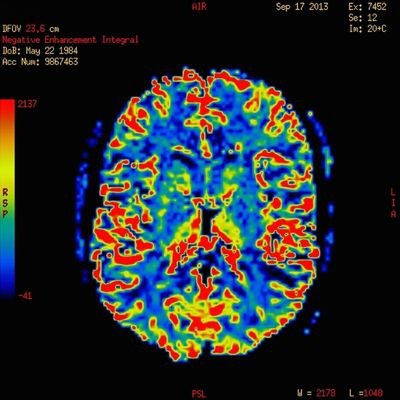
Prev
Next
Improving Speech Impediments
Similar to the new language initiatives at OSU is the research into improving speech patterns.
Individuals who have trouble speaking will also have their brains' mapped.
Researchers hope to gain a more intimate understanding on how to provide speech therapy.

Prev
Next
Using Nano Robots
OSU researchers are developing nano robots for tasks that human beings are too big, or too clumsy, to do.
The robots could be used to perform everything from surgery to custodial maintenance.
Some robots could have their own ability to make decisions, researchers stated.

Prev
Next
Using Marine Life as Biofuels
Oregon State Researchers are studying the use of organisms found deep in the ocean as a possible biofuel for cars.
The researchers already have the expertise to package the energy from the organic material, but the technology hasn't caught up, according to engineers.
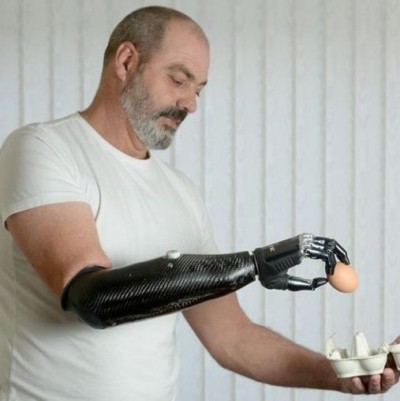
Prev
Next
Prosthetic Limbs Controlled by Thoughts
Researchers are developing mechanical components at OSU for prosthetic limbs that respond to nerve impulses sent to it from the body.
“We want to use these (components) to connect to muscles and tissue in the human body,” Lab Director Ravi Balasubramanian said.
“This combination of human movement and robotics is going to be a very exciting area of work for the next 25 years,” Balasubramanian said.

Prev
Next
Cancer Prevention
Cancer research at OHSU is extensive, and shows now sign of decreasing any time soon.
Nike-founder Phil Knight pledged that he would donate $500 million to the Knight Cancer Institute at OHSU, on the condition that the university and legislature would match his contribution by December 2015. The university has raised more than $400 million to match Knight's challenge, according to media reports.
One current project examines on whether cancer can be prevented by what a patient chooses to eat.

Prev
Next
Cancer Cure
OHSU research is taking on the the disease from every angle it can, administrators said.
One of the areas of study researchers are examining is genetics.
If successful, doctors may be able to target specifically cells damaged by particularly aggressive cancers.
Enjoy this post? Share it with others.





 Email to a friend
Permalink
Email to a friend
Permalink













_demonstrates_the_use_of_a_robot_to_disarm_and_defeat_improvised_explosive_devices_(IEDs)_during_a_media_demonstration_at_Fort_St_400_400_90.jpg)



















_demonstrates_the_use_of_a_robot_to_disarm_and_defeat_improvised_explosive_devices_(IEDs)_during_a_media_demonstration_at_Fort_St_80_80_90_c1.jpg)











Follow us on Pinterest Google + Facebook Twitter See It Read It